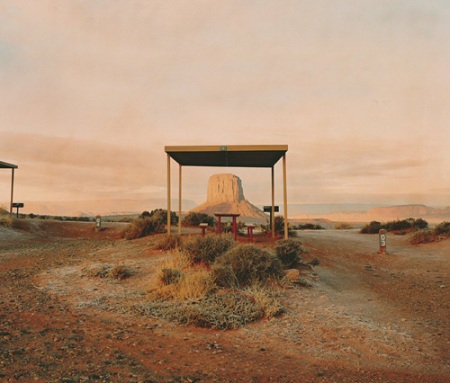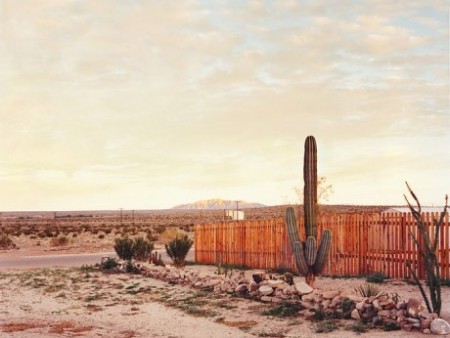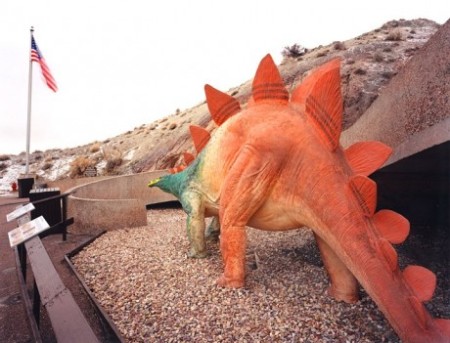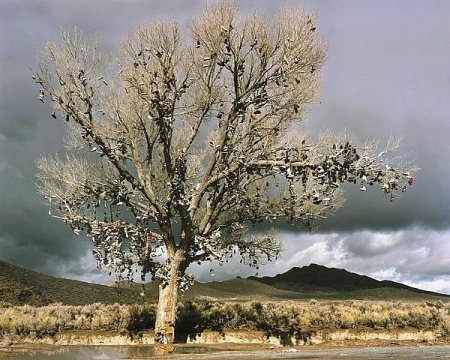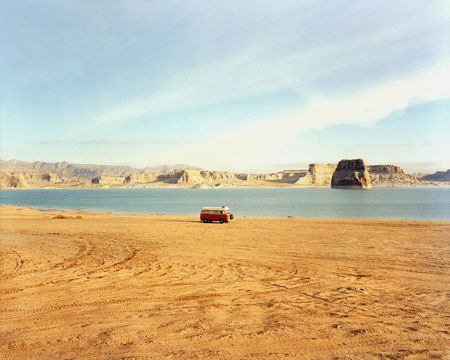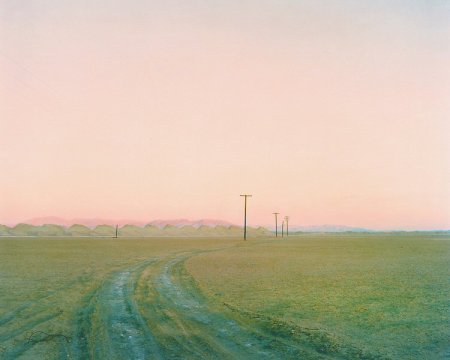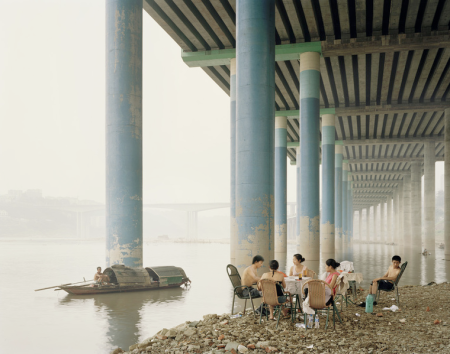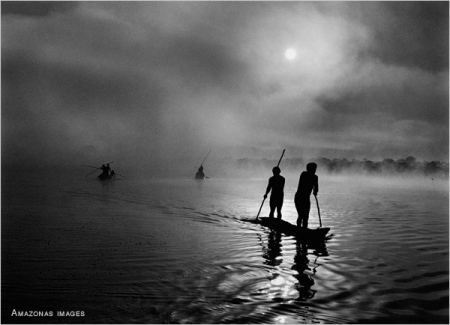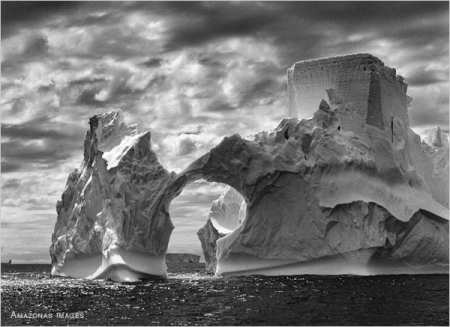
A few posts back, I wrote about the work of Daniel Shea, a Chicago based photographer covering environmental topics. I specifically focused on a project titled “Removing Mountains” (click here to read older post), where Shea spent 3 months in Appalachia documenting an extremely destructive form of coal mining called Mountain Top Removal. Shea was kind enough to answer a few questions about the work, process, and his ideas on the subject matter.
How did you first become interested in this subject and why?
First off, thanks for doing this interview! Issues surrounding coal and energy usage in this country are becoming increasingly relevant, and it makes me really happy to see people trying to get the word out. As for the question, at some point in high school I discovered radical politics and alternative models for current economic and social conditions. As you can imagine, an entire world was suddenly opening up for me. In college, while hanging out in the local anarchist bookshop, Red Emma’s , I met a few activists who were part of something called “Mountain Justice Summer.” MJS, I learned, was a summit for activists and community organizers interested in ending current coal-mining practices (in particular mountaintop removal mining) through direct action and public outreach. I almost immediately knew I wanted to travel to the region to explore mountaintop removal and the affected social landscape of Appalachia. I had the opportunity to apply for the Meyer Travelling Fellowship, and I worked on the grant for a year. I ended up getting the grant, and the rest is history.
Do you consider yourself an environmentalist?
This is a hard question to answer. I’ve become increasingly disillusioned with ideological perspectives in recent years, as they tend to filter reality in a way that is generally unproductive. Instead of subscribing to a political ideology, such as environmentalism, veganism, anarchism, feminism (all things I hold dear, in one way or another), I try to embrace an overall state of social awareness. Semantics aside, as someone who is deeply interested in sustaining the future of the natural world and generally looks at industry with profound cynicism (while admittedly still participating in the culture), I am an environmentalist. I have to be careful with my identifying labels, especially while on the road and retaining an air of neutrality. Of course, the perception of neutrality is what’s important, considering I very clearly have opinions on the matter!
You temporarily moved to and lived in a mountain town in Appalachia for 3 months in order to complete this project, how did you approach what you were doing with other members of the home you lived in?
I approached the situation with sincere and 100% genuine reverence. I’ve learned so much from listening to other people over the years, especially in the context of struggle. Coming to this region as a complete outsider was something I was constantly aware of. I reconciled my position of privilege only by gradually increasing my place in the community from passive witness to an involved artist. That being said, again, I had to maintain the perception of neutrality, so I was clearly not in the region as an activist (despite living with some of the most amazing activists I have ever met). I expected my transition into the community to be slow, however the people I lived with, and the folks involved in the fight against MTR were exceedingly warm and welcoming and made my stay there feel like home.
Portraits shape a large part of the work, including miners, some quite young and just starting on their path to a mining career. While this particular type of mining is known to be extremely harmful and devastating to wildlife, ecology, water supply, human health, and more, it also brings a much needed demand of labor and therefore resulting jobs, as well as a way of life passed down from generations before breeding a certain mining culture. How did you broach the controversial topic you were exploring when approaching your subjects in taking their portraits?
This question perhaps touches on exactly why this issue is so complex. Not only is the coal industry the main provider of jobs to an economically devastated region (due to coal, but that is another essay) but the idea of coal (in labor and history) is so ingrained in the culture that it constitutes one of the main fabrics of Appalachian life. Appalachian culture and coal can hardly be separated. We all can speak in grandiose in terms about the environment and industry, but the reality of the situation is that a working man in Appalachia is interested in having a job come next year. That is why I firmly believe that you can’t talk about the devastation of the coal industry and the urgent need to curb all current practices without presenting a clear economic alternative. Thankfully, clean energy alternatives and a push towards local, sustainable economies is often in the dialogue with activists and other citizen advocacy organizations.
What did you find to be the cultural implications of surface mining directly on the Appalachian mining community?
I wish there was an easy and concise way to answer this question! It’s important to understand that in a lot of towns, there was a point where coal was able to employ a large population and bring relative economic prosperity. However, coal, like all fossil fuels, is a finite source for energy, and once a given region’s resources have been extracted, there is often no work left. Coupled with rapidly changing technologies over the last 40 years (which lead to the development of modern incarnations of mining coal, such as mountaintop removal), which need a fraction of the work force once needed, I can safely say that coal has devastated the region economically. In our country and in most parts of the world, economic devastation leads to cultural disintegration on some level. The paradox here of course is that coal is Appalachia’s blessing and curse. It provides the few jobs available to a lot of the region’s underserved communities, but at the same time, the industry is just as responsible for economic devastation. It is both the provider and perhaps the only historically relevant industry to set the path for the rather complex economic issues plaguing the region.
That being said, culture is clearly affected by more elements than economics (although this is the prominent filter by which to speak of all elements of life in America). With mountains literally being destroyed, the fabled relationship Appalachians have with their mountains is being destroyed on the most basic level. How can you be people of the mountains with no mountains?Do you have an official stance on surface mining? I would like to see our country and the rest of the world make the shift to more sustainable modes for harboring and consuming energy. Stripped of all the rhetoric and politics, no one with any degree of credibility or intelligence will tell you that extracting and burning coal is indefinitely sustainable.
What do you believe will be the future for this specific industry?
I don’t have the expertise to really comment on this, but I feel that the coal industry, like most sectors of extraction and unsustainable industries, will soon be forced to redefine their practices. I think realistically, the campaign for “clean coal” will win the uniformed minds of the American people and the unconscionable deep pockets of American government. That’s unfortunate, but I’m admittedly cynical about this type of thing. Again, I’d like to see an end to all coal extraction practices, but that would require a relatively overnight shift in ideology, which I really don’t see happening.
What are you working on next?
I’m in the grant-writing and fund-seeking stages of a project that I would like to execute in Southern Ohio as a follow-up to Removing Mountains. Along the Ohio River are countless coal-fired power plants dotting the landscape. A lot of coal from Appalachia is being shipped to this region for energy conversion. I’d like to spend a month or two living in Southern Ohio, documenting the effects of the coal-burning industry on the landscape and local communities. I’ve already spent some time here, doing preliminary research, but I’m hopefully looking to complete this project in the Fall of this year. There are literally ghost towns surrounding some of these large plants due to the increasing sickness of all the residents in the immediate proximity. It’s a fascinating landscape and very revealing of the way a lot of people in this country live under the shadow of industry. This work, coupled with Removing Mountains, will hopefully be published as a book in 2010.
To view more of Daniel’s work, please visit his website dsheaphoto.net.
